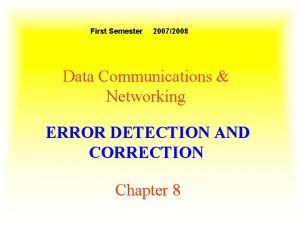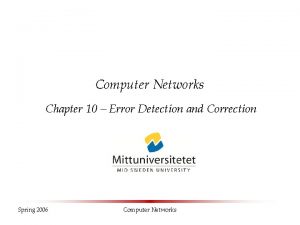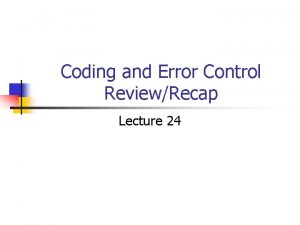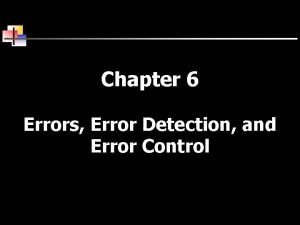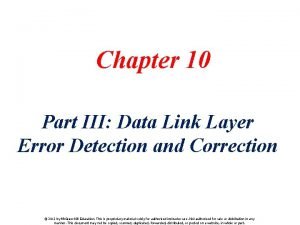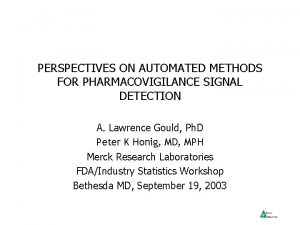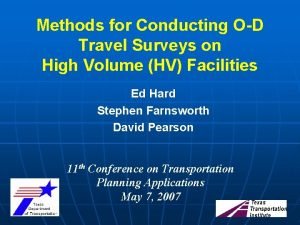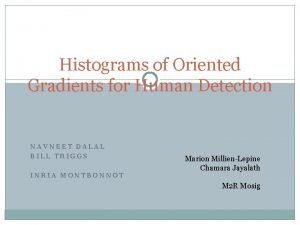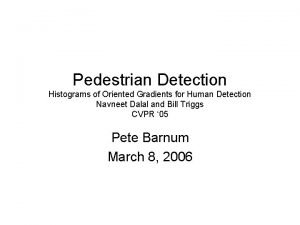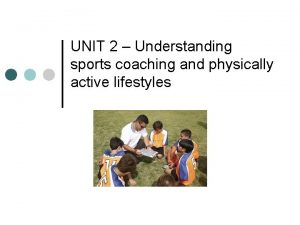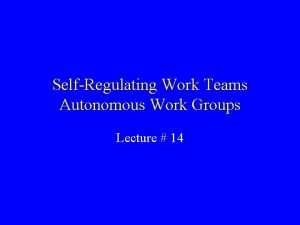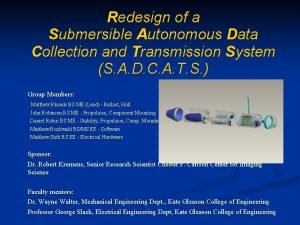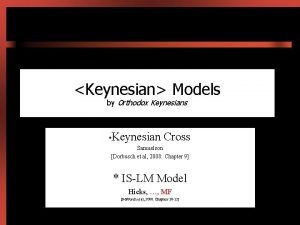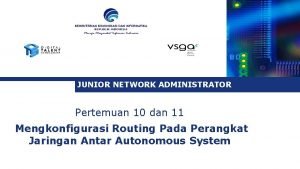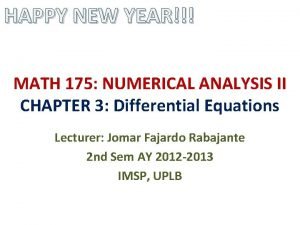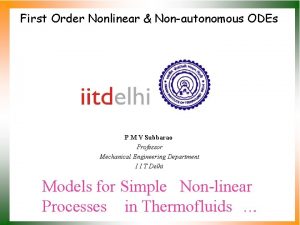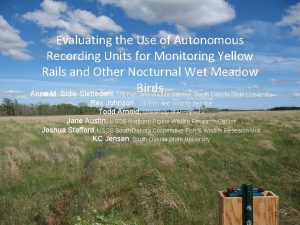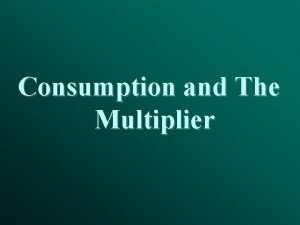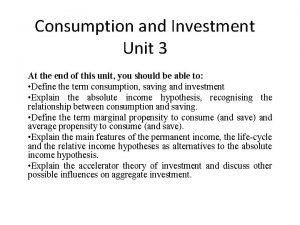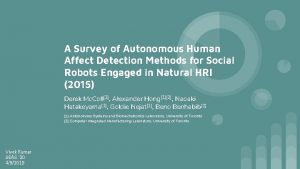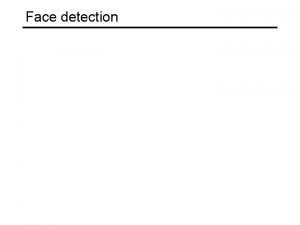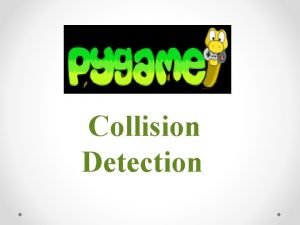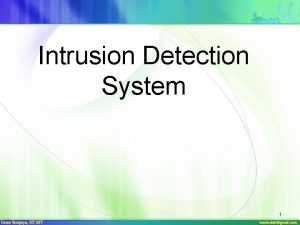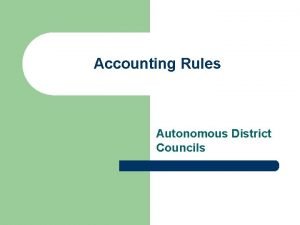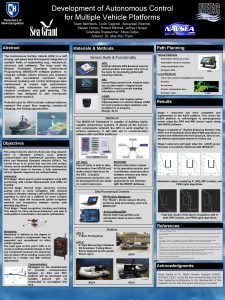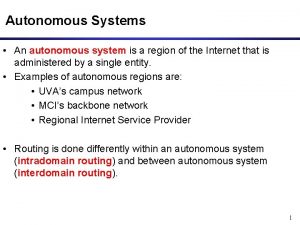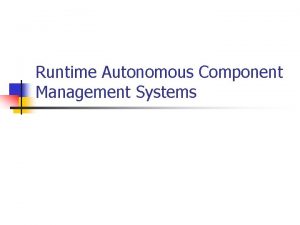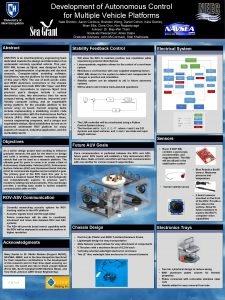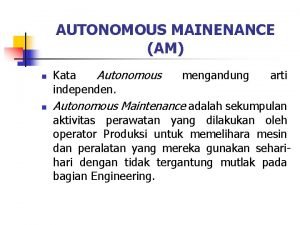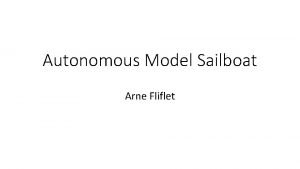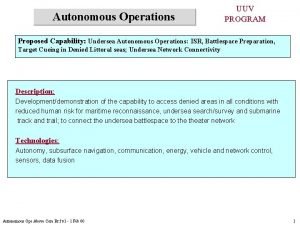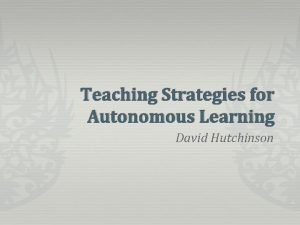A Survey of Autonomous Human Affect Detection Methods





![Dimensional Models Classifies affect into dimensional space. Wundt (1897), Schlosberg (1954): [pleasure/displeasure, arousal/calm, relaxation/tension] Dimensional Models Classifies affect into dimensional space. Wundt (1897), Schlosberg (1954): [pleasure/displeasure, arousal/calm, relaxation/tension]](https://slidetodoc.com/presentation_image_h/7aea0fb0894cdd4febcfa67b3d3796a5/image-6.jpg)

























- Slides: 31

A Survey of Autonomous Human Affect Detection Methods for Social Robots Engaged in Natural HRI (2015) Derek Mc. Coll[1], Alexander Hong[1][2], Naoaki Hatakeyama[1], Goldie Nejat[1], Beno Benhabib[2] [1] Autonomous Systems and Biomechatronics Laboratory, University of Toronto [2] Computer Integrated Manufacturing Laboratory, University of Toronto Vivek Kumar SEAS ‘ 20 4/9/2019

Natural HRI Detect common human communication cues/modalities for more natural social interaction. Affect: a complex combination of emotions, moods, interpersonal stances, attitudes, and personality traits that influence behavior. A robot capable of interpreting affect will be better at sustaining more effective and engaging interactions with users.

Timeline 1 2 3 4 5 6 7 Affect Categorization Models Facial Expression Body Language Voice Physiological Signals Combination Future Work HRI Scenarios: Collaborative HRI, Assistive HRI, Mimicry HRI, General HRI

Affect Categorization Models

Categorical Models Classifies affect into discrete states. Darwin (1872), Tomkins (1962): [joy/happiness, surprise, anger, fear, disgust sadness/anguish, dis-smell, shame], neutral Ekman: Facial Action Coding System (FACS), codifies facial expression with action units (AU) Clearly distinguish affect, but may have trouble with inclusion and combination. https: //en. wikipedia. org/wiki/Facial_Action_Coding_System
![Dimensional Models Classifies affect into dimensional space Wundt 1897 Schlosberg 1954 pleasuredispleasure arousalcalm relaxationtension Dimensional Models Classifies affect into dimensional space. Wundt (1897), Schlosberg (1954): [pleasure/displeasure, arousal/calm, relaxation/tension]](https://slidetodoc.com/presentation_image_h/7aea0fb0894cdd4febcfa67b3d3796a5/image-6.jpg)
Dimensional Models Classifies affect into dimensional space. Wundt (1897), Schlosberg (1954): [pleasure/displeasure, arousal/calm, relaxation/tension] Valence: positive or negative affectivity Arousal: calming or exciting Russell: two-dimensional circumplex model with valence and arousal dimensions. https: //researchgate. net

Facial Affect Recognition

Experiment: i. Cat Summary: i. Cat plays chess and provides real-time affective (empathetic) feedback to the opponent (change in facial expression, comment, bad move on purpose). Affect Classifier: Support Vector Machine (SVM) Input: smile probability (face. API), eye gaze (face. API), game state Output: positive, neutral, negative valence, action Experiment: three groups of 40 chess players- no empathetic response, random empathetic response, adaptive empathetic response. Results tallied from interviews of chess players afterwords. https: //azure. microsoft. com/en-us/services/cognitive-services/face/

Results: i. Cat Demo: https: //www. youtube. com/watch? v=Qk 2_rl. Wv. Hts

Experiment: AIBO Summary: make AIBO respond to human affect with sound, light, or motions in a dog-like manner. Affect Classifier: Probabilistic FACS lookup Input: camera stream, obtain feature points and AUs, map to facial expression Output: categorical [joy, sadness, surprise, anger, fear, disgust, neutral] Experiment: Alongside Q-learning, AIBO adapts its behavior to the human’s affective state over time. This is characterized by appropriate affect recognition.

Results: AIBO appeared to achieve a friendly personality when treated with positive affects (joy). Demo: https: //www. youtube. com/watch? v=z 9 m. WWU-T 6 WU

Body Language Affect Recognition

Experiment: Nadine Summary: Nadine implements a gesture classification system (GUHRI) and the appropriate response. Affect Classifier: Large Margin Nearest Neighbors Input: Action gesture from Kinect sensor and Cyber. Glove (skeleton joint locations) Output: confidence, praise (affects), or responsive output gesture: wave, shake hand Experiment: 25 participants of varying body type (race, gender, etc), who performed one of the designated output gestures. https: //en. wikipedia. org/wiki/Kinect http: //www. cyberglovesystems. com/

GUHVI System Architecture

Nadine: Results Gesture recognition rate of 90 -97%, followed by appropriate response. Demo: https: //www. youtube. com/watch? v=usif 8 BOBHg. A

Voice Affect Recognition

Feature Extraction from Human Voice: Open. Ear (OE) Baseline Fundamental Frequency: the lowest frequency of a periodic waveform. For any given waveform, we find period T such that is minimized: Energy: area squared magnitude of waveform. Mel-frequency Cepstral Coefficient (MFCC): power spectrum Phase distortion: a change in the shape of waveform Jitter/Shimmer: variations in signal frequency/amplitude http: //geniiz. com/wp-content/uploads/sites/12/2012/01/26 -TUM-Toolsopen. EAR. pdf

Experiment: Nao Summary: adults speak with Nao about a variety of topics, and Nao attempts to classify positive or negative valence from the user’s voice. Affect Classifier: Support Vector Machine (SVM) Input: fundamental frequency, energy, MFCCs, phase distortion, jitter, shimmer, etc. Output: positive or negative valence Experiment: 22 adults speak with NAO wearing a microphone, with pre-coded, highly aroused voice signals.

Results: Nao RD: relaxation coefficient P-unvoiced: unvoiced consonants HNR: harmonicity FPD: functions of phase distortion Demo: https: //www. youtube. com/watch? v=p 1 ID-gv. Un. Ws

Affective Physiological Signal Recognition

Physiological Signals Heart Rate Affect Skin Cond. Muscle Tension

Experiment: Robotic Arm Summary: an affect detection system for a robotic arm when the human and arm are engaged in a collaborative task. Affect Classifier: Hidden Markov Model (HMM) Input: heart rate (EKG), skin conductance, muscle tension (forehead, Myo. Scan) Output: arousal (low, medium, high); valence (low, medium, high) Experiment: 36 participants with tasks: pick-and-place; reach-and-grab; varying speed and obstacles.

Results: Robotic Arm

Experiment: Basketball Summary: attach a basketball net to a robotic arm, and move it based on the player’s anxiety level. Affect Classifier: Support Vector Machine (SVM) Input: heart rate (EKG), skin conductance, muscle tension (neck, Myo. Scan), skin temperature Output: anxiety classification (low, medium, high) Experiment: a basketball game with the robot. The robot varies the difficulty based on the anxiety level of the players.

Results: Basketball 79% of participants reported proper anxiety change. https: //researchgate. net

Multimodal Affect Recognition

Experiment: Maggie Summary: a general purpose interactable robot. Affect Classifier: Decision Tree/Decision Rule, Bayes’s Theorem Input: voice features (see voice section), CERT/SHORE face detection Output: categorical [happy, neutral, sad, surprise] Experiment: 40 students pose with voice and facial affective state. https: //www. iis. fraunhofer. de/en/ff/sse/ils/tech/shore-facedetection. html http: //mplab. ucsd. edu/~marni/Projects/CERT. htm

Results: Maggie DT | CERT https: //researchgate. net 1 Voice Classification 2 Facial Classification 3 Overall Classification DR | SHORE 56% 57% 76% 63% 77 -83%

Conclusion

Future Work Improve affect categorization models Improve sensors (most frequent- Kinect, webcams, etc) Use transfer learning Develop systems that are robust to age and cultural backgrounds

Popular Resources Cohn-Kanade database CMU database JAFFE database Da. FEx database Emo. Voice Emo. DB database
 Error detection methods
Error detection methods Crc in computer networks
Crc in computer networks Error detection methods
Error detection methods Error detection methods
Error detection methods Visible surface detection methods
Visible surface detection methods Error detection methods in data link layer
Error detection methods in data link layer Pharmacovigilance signal detection methods
Pharmacovigilance signal detection methods 意識abcd
意識abcd Od survey methods
Od survey methods Histograms of oriented gradients for human detection
Histograms of oriented gradients for human detection Histograms of oriented gradients for human detection
Histograms of oriented gradients for human detection Direct wax pattern
Direct wax pattern Motive is not a modifier of human act
Motive is not a modifier of human act What are the environmental factors that affect human health
What are the environmental factors that affect human health Metes and bounds aphg
Metes and bounds aphg Township and range ap human geography
Township and range ap human geography Cognitive associative and autonomous stages of learning
Cognitive associative and autonomous stages of learning Autonomous benthic explorer
Autonomous benthic explorer Autonomous work teams
Autonomous work teams Autonomous data harvesting
Autonomous data harvesting Atonic vs autonomous bladder
Atonic vs autonomous bladder Frontal lobe function
Frontal lobe function Autonomous expenditure formula
Autonomous expenditure formula Mengkonfigurasi router pada stub as
Mengkonfigurasi router pada stub as Autonomous expenditures
Autonomous expenditures Happy new year equation
Happy new year equation Non autonomous differential equation
Non autonomous differential equation Autonomous recording units
Autonomous recording units Autonomous consumption
Autonomous consumption Autonomous investment
Autonomous investment Algebric demand function
Algebric demand function Autonomous to lightweight mode upgrade tool
Autonomous to lightweight mode upgrade tool
